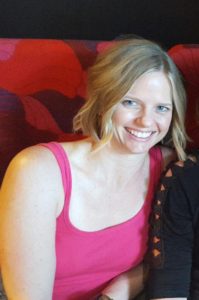 I am very excited to focus on mindfulness at Rivercity Pilates this month. I have to admit, a few months ago I am not sure I really understood mindfulness. I am still not sure I do, but I am excited to share a few insights from my experience taking the Mindfulness-Based Stress Reduction Program through the University of Iowa.
I am very excited to focus on mindfulness at Rivercity Pilates this month. I have to admit, a few months ago I am not sure I really understood mindfulness. I am still not sure I do, but I am excited to share a few insights from my experience taking the Mindfulness-Based Stress Reduction Program through the University of Iowa.
When I signed up for the Mindfulness-Based Stress Reduction Program, I was apprehensive and not entirely sure what I was getting myself in to….What is mindfulness? How do I achieve it? What will it do for me? What I learned is there are many possible answers to these questions.
While my understanding of mindfulness continues to evolve, after participating in the Mindfulness-Based Stress Reduction Program, I have some initial answers to my questions.
What is mindfulness? According to Jon Kabat-Zinn, “Mindfulness is the awareness that comes from paying attention, on purpose, in the present moment, non-judgmentally.”
How do I achieve it? Mindfulness is a practice, not a destination. It is a way of living. In the words of Jon Kabat-Zinn, being mindful is simple but not easy.
A few ways that we practiced mindfulness during the Mindfulness-Based Stress Reduction Program include a guided body scan, meditation, mindful eating, mindful movement, and paying attention to our senses (smelling, tasting, feeling, seeing, and hearing) during events throughout the day.
What will it do for me? There are many potential benefits of practicing mindfulness, including decreased stress, decreased chronic pain, decreased anxiety, improved anger management, and improved quality of life. Personally, practicing mindfulness is helping me become more responsive rather than reactive. It is helping me focus on the present, rather than dwelling in the past or worrying about the future. It is helping me become a little less judgemental with myself by focusing on the process rather than the outcome. And for all of that, I am grateful.
“Mindfulness means seeing things as they are, without trying to change them. The point is to dissolve our reactions to disturbing emotions, being careful not to reject the emotion itself. Mindfulness can change how we relate to, and perceive our emotional states.”
Tara Bennet-Goldmen,PhD in Emotional Alchemy
For more information about mindfulness programs at the University of Iowa, visit https://uihc.org/mindfulness-programs
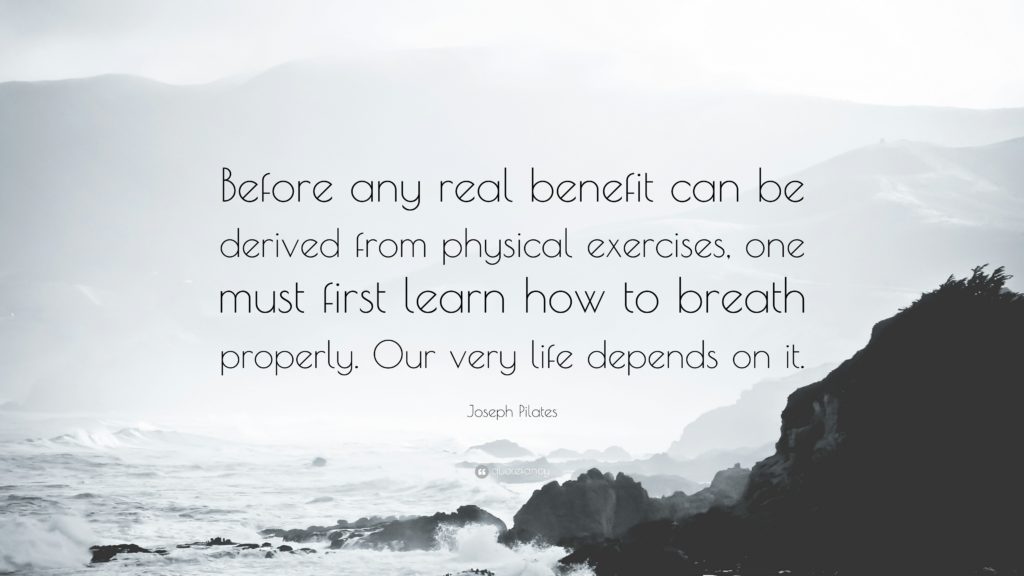 Maybe you’ve never even thought about how you breathe and how it affects your health…if not you should! Joseph Pilates talked a lot about the importance of learning to breath correctly in his book, Return to Life. Joseph Pilates said,” Breathing is the first act of life and our last and our very life depends on it. It is deplorable to contemplate about the millions and millions who have not mastered the art of correct breathing.” The Pilates method of exercised is based on the fundamental idea of learning to breathe fully and properly and to use breath to help our body movements more efficiently! Want to learn about some more benefits of practicing your breath? Check out this great article about all of the reasons you might want to learn to breathe better:
Maybe you’ve never even thought about how you breathe and how it affects your health…if not you should! Joseph Pilates talked a lot about the importance of learning to breath correctly in his book, Return to Life. Joseph Pilates said,” Breathing is the first act of life and our last and our very life depends on it. It is deplorable to contemplate about the millions and millions who have not mastered the art of correct breathing.” The Pilates method of exercised is based on the fundamental idea of learning to breathe fully and properly and to use breath to help our body movements more efficiently! Want to learn about some more benefits of practicing your breath? Check out this great article about all of the reasons you might want to learn to breathe better: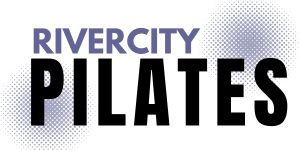
 I am very excited to focus on mindfulness at Rivercity Pilates this month. I have to admit, a few months ago I am not sure I really understood mindfulness. I am still not sure I do, but I am excited to share a few insights from my experience taking the Mindfulness-Based Stress Reduction Program through the University of Iowa.
I am very excited to focus on mindfulness at Rivercity Pilates this month. I have to admit, a few months ago I am not sure I really understood mindfulness. I am still not sure I do, but I am excited to share a few insights from my experience taking the Mindfulness-Based Stress Reduction Program through the University of Iowa.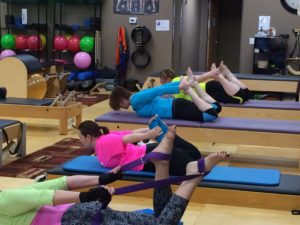 I teach a weekly class that I call Return to Life on the Mat. In this class we practice the entire advanced Pilates Mat sequence that Joseph Pilates created in a very flowing tempo. Most of the classes on our group class schedule are considered all levels, but Return to Life is not and because of that I require that students be approved by a teacher to take the class. This is because we do exercises that are often not taught in an all levels class and the pace is pretty quick so there is not a lot of time as a teacher for me to stop and “teach” an exercise to an individual body who has not done it before. As a teacher it’s always first on my list to keep all students safe in their body. Truly this class flows enough that at the end of class your heart rate is often raised and you are dripping with sweat as if you just went for a brisk walk or run! If the challenge of being able to safely practice the advanced mat sequence is something you would love to do, definitely talk to me or your teacher about how we can help you get there!
I teach a weekly class that I call Return to Life on the Mat. In this class we practice the entire advanced Pilates Mat sequence that Joseph Pilates created in a very flowing tempo. Most of the classes on our group class schedule are considered all levels, but Return to Life is not and because of that I require that students be approved by a teacher to take the class. This is because we do exercises that are often not taught in an all levels class and the pace is pretty quick so there is not a lot of time as a teacher for me to stop and “teach” an exercise to an individual body who has not done it before. As a teacher it’s always first on my list to keep all students safe in their body. Truly this class flows enough that at the end of class your heart rate is often raised and you are dripping with sweat as if you just went for a brisk walk or run! If the challenge of being able to safely practice the advanced mat sequence is something you would love to do, definitely talk to me or your teacher about how we can help you get there! The goal of your Pilates practice is not (or should not!) be to “get to a certain level” or to be able to do a particular exercise. The goal is to move your body in a way that brings balance and uniform development to your body, which in turn allows your body to function at its best. I believe the best way to achieve that goal is to find movement classes that you enjoy coming to and create an at home practice that supports your goal to create optimum health in your body. Probably the most challenging part about a Pilates practice that I see in clients is consistency. The method itself is amazing, and if you practice on a regular basis you will feel results and reap daily benefits from it. But let’s face it…life gets crazy and movement and exercise time is often one of the things that easily gets thrown aside. If you want to make a commitment to advancing your Pilates practice simply make a commitment to keep practicing!!
The goal of your Pilates practice is not (or should not!) be to “get to a certain level” or to be able to do a particular exercise. The goal is to move your body in a way that brings balance and uniform development to your body, which in turn allows your body to function at its best. I believe the best way to achieve that goal is to find movement classes that you enjoy coming to and create an at home practice that supports your goal to create optimum health in your body. Probably the most challenging part about a Pilates practice that I see in clients is consistency. The method itself is amazing, and if you practice on a regular basis you will feel results and reap daily benefits from it. But let’s face it…life gets crazy and movement and exercise time is often one of the things that easily gets thrown aside. If you want to make a commitment to advancing your Pilates practice simply make a commitment to keep practicing!!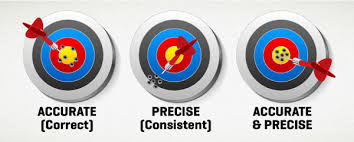 This month’s studio focus is the idea of “Precision” in your movement practice. For me, precision is simply fine tuning. Precision is the challenge of continuing to practice a movement so that each time I do it, it gets a little better and I get a little bit “more” out of the exercise. Precision is what keeps my mind occupied when I’m doing an exercise that I’ve done thousands of times. Precision is also what creates movements that are controlled and refined.
This month’s studio focus is the idea of “Precision” in your movement practice. For me, precision is simply fine tuning. Precision is the challenge of continuing to practice a movement so that each time I do it, it gets a little better and I get a little bit “more” out of the exercise. Precision is what keeps my mind occupied when I’m doing an exercise that I’ve done thousands of times. Precision is also what creates movements that are controlled and refined. I think we could all agree that not all workouts are for EVERY body. For example….running is not the best choice for EVERY body. If you are overweight or have knee or hip issues…running is not going to feel good on your body and its not necessarily good for it as it may exacerbate pre-existing conditions. Another example…if you have low back problems, jumping into a fitness program that does a lot of burpees and planks may actually make your back pain worse if you are not using good form. Yet if you are an elite athlete, or fairly healthy with no pre-existing conditions this might be the perfect type of workout for you. I truly believe there is not one exercise program that is the perfect fit for EVERY body…although I do think there might just be a piece of equipment that effectively trains EVERY body- the Pilates Reformer. Let me explain.
I think we could all agree that not all workouts are for EVERY body. For example….running is not the best choice for EVERY body. If you are overweight or have knee or hip issues…running is not going to feel good on your body and its not necessarily good for it as it may exacerbate pre-existing conditions. Another example…if you have low back problems, jumping into a fitness program that does a lot of burpees and planks may actually make your back pain worse if you are not using good form. Yet if you are an elite athlete, or fairly healthy with no pre-existing conditions this might be the perfect type of workout for you. I truly believe there is not one exercise program that is the perfect fit for EVERY body…although I do think there might just be a piece of equipment that effectively trains EVERY body- the Pilates Reformer. Let me explain.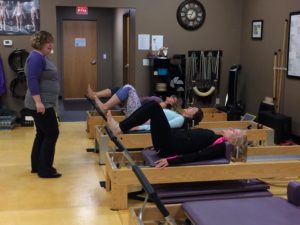 For the overweight person who is just starting to exercise, the Reformer provides a supportive place to strengthen the entire body without strain.
For the overweight person who is just starting to exercise, the Reformer provides a supportive place to strengthen the entire body without strain.